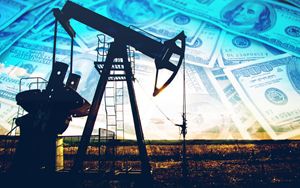(Finance) – Oil recently flew close to 100 dollars a barrel, the highest level since 2022, incorporating a series of geopolitical and supply tensions linked to the rationing policy developed by OPEC Plus. Understanding where it will go the price of oil is crucial for the effects that energy products have on inflation and, therefore, on the ECB’s monetary policy. A difficult winter awaits us? Or will 2024 bring some good news?
OPEC Plus decided to maintain rationing
OPEC Plus, the extended group of the cartel which also includes Russia, has developed a supply rationing policy since the end of 2022, with the aim of supporting the price of oil. it currently appears unlikely that the enlarged cartel will change its current production policy, as Saudi Arabia and Russia have confirmed that they will maintain voluntary supply cuts.
An OPEC Plus committee of ministers met today, anticipating the November summit, which reiterated the supply policy, after Saudi confirmed a voluntary cut of 1 million barrels last Friday and Russia of 300 thousand barrels up at the end of December.
Saudi Energy Minister Prince Abdulaziz bin Salman recently reiterated that cuts are necessary to stabilize the market and did not want to confirm that there is also an interrelation with the price.
Analysts divided: those who bet on a decline and those who see it at 150 dollars
Analysts are currently very divided on how oil will move in the coming months. For example, Citigroup analysts see oil at $100 “for a short period”, due to production cuts and geopolitical tensions, but they bet that prices will fall again by the end of the year.
“The Saudi appetite to take oil off the market, combined with the fact that Russia maintains a number of export constraints, points to higher prices in the near term, all else being equal, but prices of $90 seem unsustainable given a supply growth faster than demand growth”, explains the Citigroup team, which predicts a fall in prices next year.
Analysts at JP Morgan think differently, expecting an oil supercycle that will bring the price to $150 by 2026. Catalyzing factors would include a capacity shock, an energy supercycle and, of course, decarbonization efforts. JPMorgan now sees a global supply-demand imbalance of 1.1 million barrels per day in 2025, rising to a deficit of 7.1 million barrels per day in 2030.
The effects on inflation and the ECB’s decisions
What impact will oil movements have on the economy and inflation? In a generally deflationary context. Generali Investment experts hypothesize that oil prices will return to having a moderate impact on prices starting from December. but with an economy experiencing a period of weakness, experts believe that cyclical pressure on prices will remain limited.
Furthermore, bottlenecks in intermediate products, which drove price surges during the pandemic, have run their course and excess post-Covid demand for services has largely run its course.
This is why Generali Investment believes that the recent increase in oil prices induces only small fluctuations in inflation data. In this context, the easing of government measures to contain inflation will have a priority role. But ultimately experts believe that inflation will fall towards 3% by the end of the year, making a further increase in the ECB’s key rate unnecessary.
(Photo: © Aleksandr Prokopenko / 123RF)
